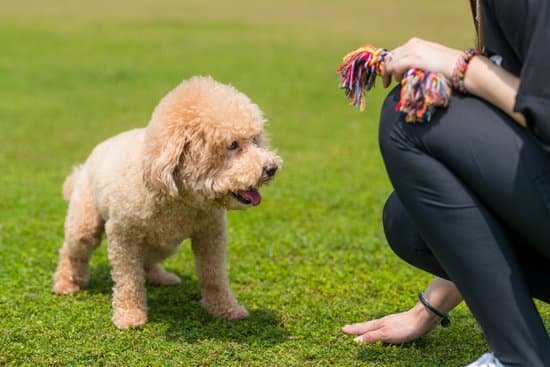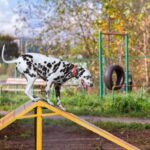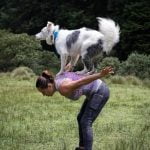Dogs chewing on shoes can be a frustrating and common problem for many pet owners. If you’ve ever come home to find your favorite pair of shoes destroyed, you know the struggle. But why do dogs have such a strong affinity for chewing on shoes? In this article, we will explore the reasons behind this behavior and provide effective strategies to train your dog not to chew on shoes.
Chewing is a natural behavior for dogs that serves multiple purposes. Puppies, in particular, use their mouths to explore their surroundings and relieve teething discomfort. However, adult dogs may continue to chew on things like shoes due to boredom or separation anxiety. Understanding the root cause of your dog’s chewing habit is crucial in developing an appropriate training plan.
One important step in addressing this issue is puppy-proofing your home and creating an environment conducive to success. This involves removing temptations such as shoes from your dog’s reach and providing them with appropriate alternatives. By doing so, you can help redirect their chewing urges towards more acceptable objects while teaching them what is off-limits.
By delving deeper into these topics and implementing the techniques outlined in this article, you can set yourself up for success in training your dog not to chew on shoes. From rewarding good behavior with positive reinforcement to offering appropriate chew toys and establishing clear boundaries through consistency, each strategy discussed will contribute towards creating a chew-free household that both you and your furry friend can enjoy.
The Importance of Puppy-Proofing
Puppies, like children, have a natural curiosity and tendency to explore their surroundings. This can often lead to them chewing on shoes and other household items. To prevent this behavior, it is crucial to puppy-proof your home and create an environment that sets your furry friend up for success. Here are some steps you can take to ensure a chew-free household:
- Keep shoes and other tempting items out of reach: Puppies are naturally attracted to items with interesting scents and textures, such as shoes. Make sure to keep all shoes stored in closed closets or shoe racks that are inaccessible to your puppy. Consider using baby gates or crate training when you cannot supervise your puppy to limit their access to certain areas of the house.
- Eliminate clutter: Puppies may become overwhelmed or overstimulated in environments with excessive clutter. Remove unnecessary items from the floor or low surfaces where your puppy may be tempted to explore and chew on them.
- Secure electrical cords: Puppies are not only prone to chewing but also love to play with anything they can find. To prevent any accidents, secure electrical cords and wires out of your dog’s reach by placing them behind furniture or using cord covers.
Additionally, consider providing alternative outlets for your puppy’s energy and curiosity by introducing interactive toys or puzzle feeders. These toys can mentally stimulate your pup while also providing a safe outlet for their chewing urges.
By taking these steps, you can create an environment that discourages shoe chewing and sets your puppy up for success in learning appropriate behaviors. Puppy-proofing plays an essential role in preventing destructive chewing habits from forming, promoting a harmonious relationship between you and your furry companion.
Identifying the Root Cause
Dogs chewing on shoes can be a frustrating and costly problem for dog owners. In order to effectively address this issue, it is important to identify the root cause of the behavior. Chewing on shoes can stem from boredom, separation anxiety, or teething.
Boredom is a common reason why dogs may chew on shoes. Dogs are naturally active animals and need mental and physical stimulation to stay happy and healthy. When they are not provided with enough activity or engaging toys, they may resort to chewing on items like shoes out of sheer boredom.
Separation anxiety is another common cause of shoe chewing in dogs. Dogs with separation anxiety become anxious and distressed when left alone, leading them to engage in destructive behaviors such as chewing. Chewing on shoes can provide comfort and relief for these dogs during periods of separation.
Teething is a natural process that puppies go through as their adult teeth come in, typically occurring between the ages of three to eight months. During this time, puppies may experience discomfort and pain in their gums, which can lead them to chew on objects like shoes to alleviate the discomfort.
It is crucial for dog owners to determine the root cause of their dog’s shoe-chewing behavior in order to address it effectively. By understanding whether it is due to boredom, separation anxiety, or teething, owners can implement appropriate strategies and interventions tailored to their dog’s specific needs.
| Root Cause | Description |
|---|---|
| Boredom | Dogs chew on shoes out of sheer boredom when they do not have enough mental and physical stimulation. |
| Separation Anxiety | Dogs with separation anxiety chew on shoes as a way to cope with their distress when left alone. |
| Teething | Puppies chew on shoes during the teething phase to alleviate discomfort and pain in their gums. |
The Power of Positive Reinforcement
Positive reinforcement is one of the most effective techniques when it comes to training a dog not to chew on shoes. By rewarding good behavior, you can encourage your furry friend to make better choices and redirect their chewing urges. The key to successful positive reinforcement is consistency, timing, and finding the right motivators for your dog.
One of the most important aspects of positive reinforcement is timing. It’s crucial to reward your dog immediately after they exhibit the desired behavior. This helps them associate the reward with their action and reinforces the idea that chewing on shoes is not the behavior you want them to engage in. Use verbal praise such as “good job” or “well done” in a happy tone of voice, along with physical affection like petting or giving them a belly rub.
In addition to verbal praise and physical affection, treats can be an excellent motivator for dogs. Dogs are highly food-motivated animals, so offering a small tasty treat when they choose not to chew on shoes can reinforce their good behavior even more effectively. You can establish a designated treat spot near the entrance where you usually keep your shoes, so they associate it with receiving rewards for making the right choice.
Using positive reinforcement techniques consistently will help your canine companion understand what you expect from them. It’s important to remember that every dog is different, so finding what motivates and rewards them best may require some trial and error. With patience and persistence, however, you can successfully train your dog not to chew on shoes using the power of positive reinforcement.
Channeling Energy
One of the key factors in preventing a dog from chewing on shoes is ensuring that they receive ample exercise and mental stimulation. Dogs often resort to destructive chewing behaviors out of boredom or excess energy, so it is crucial to provide them with appropriate outlets for their energy. Here are some ways to channel your dog’s energy and keep them mentally stimulated:
- Daily Exercise Routine: Dogs require daily exercise to burn off excess energy and stay physically fit. Depending on the breed and age of your dog, the amount of exercise needed may vary. Incorporate regular walks, play sessions, and interactive games into your dog’s routine to keep their body active and tire them out.
- Mental Stimulation Activities: In addition to physical exercise, dogs need mental stimulation to keep their minds engaged. Consider puzzle toys or treat-dispensing toys that require problem-solving skills to access the reward inside. Training sessions that teach new commands or tricks can also provide mental stimulation while reinforcing obedience.
- Enrichment Activities: Engage your dog in activities that promote natural instincts such as sniffing, digging, and foraging. Set up a scavenger hunt around the house or in the backyard by hiding treats or toys for your dog to find. Provide them with safe items like Kong toys filled with frozen peanut butter or bone-shaped chew toys designed for long-lasting entertainment.
By incorporating these activities into your dog’s routine, you can help prevent destructive chewing behaviors by redirecting their energy towards more appropriate outlets. Keep in mind that each dog has different exercise needs, so it is essential to tailor their activities based on their breed, age, size, and health condition.
Some examples of exercises and activities to consider include
- Daily walks or jogs.
- Playing fetch or tug-of-war.
- Agility training.
- Interactive toys like treat puzzles.
- Hide-and-seek games using toys or treats.
- Scent work or nose games.
- Obedience training sessions.
- Swimming or hydrotherapy for water-loving breeds.
Remember, a tired and mentally stimulated dog is less likely to resort to destructive chewing. Consistency in providing exercise and mental stimulation will help keep your dog happy, healthy, and engaged, reducing the likelihood of them being drawn to those tempting shoes.
Redirecting Chewing Urges
One effective way to train a dog not to chew on shoes is by redirecting their chewing urges and offering appropriate chew toys. Dogs have a natural instinct to chew, so it’s important to provide them with suitable alternatives for their chewing needs. This section will discuss the importance of offering appropriate chew toys and how to choose the right ones for your dog.
When redirecting a dog’s chewing urges, it’s crucial to offer chew toys that are suitable for their age, size, and chewing habits. There are various types of chew toys available in the market, including rubber toys, nylon bones, and interactive puzzle toys. Rubber toys like Kong toys are highly recommended as they are durable and can be stuffed with treats or peanut butter to provide additional mental stimulation.
It’s important to select chew toys that are made of safe and non-toxic materials. Avoid giving your dog old shoes or items that resemble footwear, as this may confuse them and encourage them to continue chewing on inappropriate items. It’s also a good idea to rotate the available chew toys every few days, as this will keep your dog engaged and prevent boredom.
In addition to providing appropriate chew toys, it’s essential to teach your dog which objects are acceptable for chewing and which ones are off-limits. When you catch your dog attempting to chew on something they shouldn’t, calmly redirect their attention towards an appropriate toy.
Praise and reward them when they engage with the desired object instead of the forbidden item. Consistency is key in this training process, so ensure that everyone in the household follows the same rules regarding what can and cannot be chewed.
Offering appropriate chew toys is an effective way to redirect a dog’s chewing urges and prevent them from destroying shoes or other valuable items. By providing safe alternatives for their natural urge to chew, you can successfully train your dog not only what they should not do but what they should do.
Consistency is Key
One of the most crucial aspects of training a dog not to chew on shoes is consistency. Dogs thrive on routine and clear boundaries, so it is essential to establish and enforce consistent rules from the beginning. In this section, we will explore the importance of consistency in training and provide tips on how to achieve it.
Consistency begins with setting clear boundaries for your dog. Decide early on which areas and items are off-limits, such as your shoe collection. It’s important to communicate these boundaries consistently by never allowing your dog to access or chew on shoes, even if they seem harmless. Consistency in enforcing these rules will help your dog understand what is acceptable behavior.
In addition to setting boundaries, it is equally important to establish consistent routines for feeding, exercise, and playtime. Dogs thrive when they have a predictable schedule as it helps them feel secure and reduces anxiety. A consistent routine also allows you to structure their day in a way that provides ample opportunities for physical exercise and mental stimulation, which can help prevent chewing out of boredom or excess energy.
Finally, consistency extends to the training techniques you use. Positive reinforcement is highly effective in dog training, but it requires unwavering consistency. When using rewards like treats or praise for good behavior, always provide them immediately after your dog follows the desired command or behavior. This helps reinforce the connection between the action and the reward, making it more likely that your dog will repeat the desired behavior in the future.
| Tip | Description |
|---|---|
| Setting Clear Boundaries | Clearly define which areas/items are off-limits and stick to those rules consistently. |
| Establishing Routine | Create a consistent schedule for feeding, exercise, and playtime to provide structure and mental stimulation for your dog. |
| Using Positive Reinforcement | Reward good behavior immediately after it occurs to reinforce the desired actions. |
Deterrence Techniques
Understanding the Role of Deterrence Techniques
Dogs, especially puppies, are naturally curious creatures and will often explore their surroundings with their mouths. This can lead to unwanted chewing behaviors, particularly on shoes. To effectively train a dog not to chew on shoes, deterrence techniques can be employed. These techniques help discourage dogs from engaging in this behavior by making the act unpleasant or undesirable. One commonly used strategy is using bitter apple spray.
The Power of Bitter Apple Spray
Bitter apple spray is a safe and non-toxic deterrent that can be applied to shoes or other objects you want your dog to avoid chewing. The strong taste helps associate the action of chewing with an unpleasant experience for the dog. When using bitter apple spray as a deterrent, it’s important to adhere to the following steps:
- Preparation: Before applying bitter apple spray, ensure that the shoes are clean and free from any dirt or debris. This will allow the spray to adhere better and have a longer-lasting effect.
- Test on a small area: Before applying the spray liberally, test it on a small inconspicuous area of the shoe first. Wait for a few minutes to observe if any adverse reaction occurs.
- Apply generously: Once tested, apply bitter apple spray generously onto the surfaces of the shoe that your dog is prone to chew on. Do not dilute or mix it with other substances.
- Be consistent: Reapply the bitter apple spray every day until your dog learns not to chew on shoes anymore.
Remember that every dog may respond differently to deterrence techniques like bitter apple spray. Some dogs may immediately associate the taste with an unpleasant experience and stop chewing after one application, while others may require more consistent use over time.
Other Strategies for Deterrence
In addition to bitter apple spray, there are other strategies that can be employed to discourage a dog from chewing on shoes:
- Provide alternative chew toys: Offer your dog a variety of appropriate and safe chew toys that are specifically designed for dogs. This will redirect their chewing urges to more suitable items.
- Use deterrent sprays: Aside from bitter apple spray, there are other commercially available deterrent sprays that have a strong odor or taste that dogs find unpleasant. These sprays can be used on shoes or other objects you want to protect from chewing.
- Contain shoes in inaccessible areas: Keep your shoes in closed closets or shoe cabinets where your dog cannot access them. This prevents temptation and reduces the chances of chewing incidents.
By employing these deterrence techniques, you can significantly reduce the incidence of your dog chewing on shoes while simultaneously teaching them appropriate behavior and promoting a harmonious household environment.
Remedying Separation Anxiety
Separation anxiety can be a major cause of a dog’s destructive chewing behavior, including chewing on shoes. When dogs experience separation anxiety, they become anxious and stressed when left alone, often resorting to chewing as a way to cope with their emotions. To remedy this issue, gradual training and desensitization techniques can be highly effective.
One key aspect of addressing separation anxiety is gradually getting your dog used to being alone for extended periods of time. Start by leaving your dog alone in a safe space for just a few minutes at a time and gradually increase the duration over time. This helps your dog build confidence and learn that being alone is not something to be feared.
During these practice sessions, it’s important to make sure your dog has plenty of mental and physical stimulation to keep them occupied. Provide toys that dispense treats or puzzle toys that require problem-solving skills. This will redirect their focus from chewing on shoes to engaging with appropriate chew toys.
Desensitization exercises can also help your dog overcome separation anxiety. These exercises involve mimicking the actions you take when you leave the house but without actually leaving. For example, put on your coat or pick up your keys without going outside. By repeating these actions without leaving, your dog will start to associate these cues with you not actually leaving and will gradually become less anxious.
It’s important to note that remedying separation anxiety takes time and patience. It’s crucial not to rush the training process or punish your dog for their destructive behavior as it may worsen their anxiety. Consistency is key in helping your furry companion overcome separation anxiety and develop positive behaviors instead of destructive chewing habits.
By following gradual training techniques and implementing desensitization exercises, you can help alleviate your dog’s separation anxiety and ultimately reduce their urge to chew on shoes or other inappropriate items while you’re away. Remember, each dog is unique, so it may take some trial and error to find the most effective methods for your specific dog. Keep practicing patience and persistence, and celebrate each step forward in achieving a chew-free household.
Patience and Persistence
Recognizing Setbacks and Challenges
Training a dog not to chew on shoes can be a challenging process that requires patience and persistence. It is important for dog owners to recognize that setbacks and challenges are common during the training process.
Dogs may relapse into their chewing behavior due to various reasons such as boredom, stress, or lack of consistency in training. It can be frustrating for dog owners to see their shoes being chewed on again after making progress, but it is important to stay calm and understand that setbacks are a normal part of the learning process.
Identifying the Cause of Setbacks
When facing setbacks in the training process, it is crucial to identify the cause and address it accordingly. For example, if the dog is experiencing separation anxiety, it may resort to destructive chewing as a coping mechanism. In such cases, gradual training and desensitization techniques can help alleviate the anxiety and prevent further chewing episodes. Understanding the root cause of setbacks will enable dog owners to tailor their approach and make necessary adjustments to ensure long-term success.
Adapting Training Methods
Overcoming setbacks and challenges requires adaptability in training methods. If a particular technique or strategy has not been effective in preventing chewing behavior, it may be necessary to try different approaches until finding one that works best for both the dog and owner.
Additionally, consistency in enforcing boundaries and providing appropriate chew toys remains essential throughout the entire training process. By remaining patient and persistent, dog owners can gradually teach their dogs not only what they should not chew on but also what they are allowed to chew on.
By understanding that setbacks are normal and adapting training methods accordingly, dog owners can overcome challenges during the process of teaching their dogs not to chew on shoes. Patience is key in allowing dogs enough time to unlearn their old habits while persistence ensures consistent reinforcement of desired behavior. Celebrating even small successes can help maintain motivation and create a chew-free household in the long term.
Conclusion
In conclusion, training a dog not to chew on shoes is a process that requires patience, consistency, and understanding. By following the steps outlined in this article, you can create an environment for success by puppy-proofing your home and identifying the root cause of chewing behaviors. Through positive reinforcement and providing ample exercise and mental stimulation, you can redirect your dog’s chewing urges towards appropriate chew toys.
It is important to remember that consistency is key in establishing and enforcing clear boundaries. Deterrence techniques such as using bitter apple spray can also be helpful in discouraging shoe chewing behaviors. Additionally, if your dog is exhibiting separation anxiety, gradual training and desensitization methods can be employed to address this issue specifically.
Throughout this training process, setbacks and challenges are inevitable. However, with patience and persistence, you will be able to overcome these obstacles and celebrate success when your dog no longer chews on shoes. Maintaining a chew-free household may require ongoing vigilance and reinforcing the learned behavior, but by continuing to provide mental stimulation, exercise, appropriate chew toys, and consistent boundaries, you can ensure a long-term solution to this problem.
By implementing these strategies and dedicating time to train your dog not to chew on shoes, you will not only save money on replacing ruined footwear but also create a harmonious living environment for both you and your furry friend. Remember that each dog is unique and may require individualized approaches or additional professional assistance if needed.
With patience, love, and dedication, your dog can learn acceptable chewing behavior and become an obedient companion who brings joy to your life without destroying your shoe collection.
Frequently Asked Questions
How do you discipline a dog for chewing shoes?
When disciplining a dog for chewing shoes, it is important to remember that punishment alone is not effective in changing behavior. Instead, try redirecting their attention to appropriate chew toys or bones whenever you catch them in the act of chewing shoes.
Consistency is key: ensure all shoes are kept out of their reach and provide plenty of suitable alternatives for them to chew on. Additionally, crate training can be beneficial as it provides a safe and controlled environment for your dog when unsupervised.
How do I train my dog not to destroy shoes?
Training a dog not to destroy shoes requires patience and positive reinforcement. Start by providing your furry companion with several appropriate chew toys and make sure they are always readily available. Whenever you catch your dog attempting to chew on a shoe, calmly interrupt the behavior and redirect their attention to an acceptable toy.
Praise and reward them when they choose to chew on the toy instead of the shoe. Consistency is crucial here as well, so ensure everyone in your household follows this approach consistently.
What age do dogs stop chewing shoes?
The age at which dogs stop chewing shoes varies from dog to dog, as it depends on factors such as breed, individual temperament, and training efforts. Generally, most dogs tend to grow out of destructive chewing behaviors by the time they reach adulthood, around 1-2 years old for most breeds.
However, some persist into their adult years if proper training and redirection were not established early on. It’s important to continue managing their environment and providing stimulating chew toys even after they seem to have outgrown the shoe-chewing phase, as prevention is always better than cure when it comes to destructive behaviors in dogs.

Welcome to the blog! I am a professional dog trainer and have been working with dogs for many years. In this blog, I will be discussing various topics related to dog training, including tips, tricks, and advice. I hope you find this information helpful and informative. Thanks for reading!





